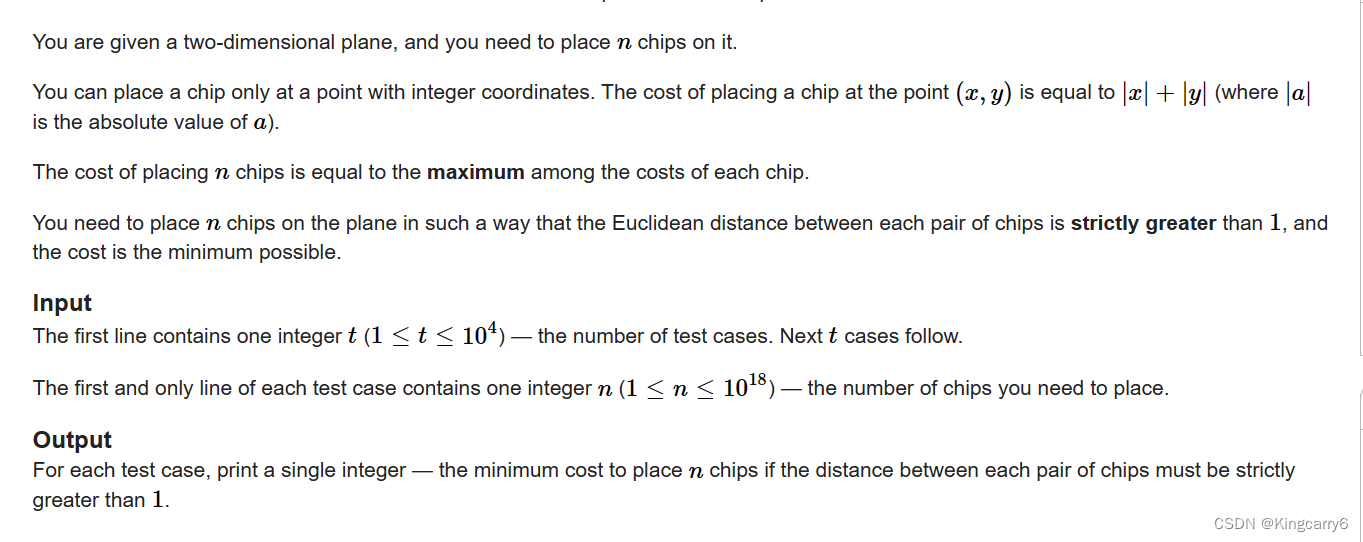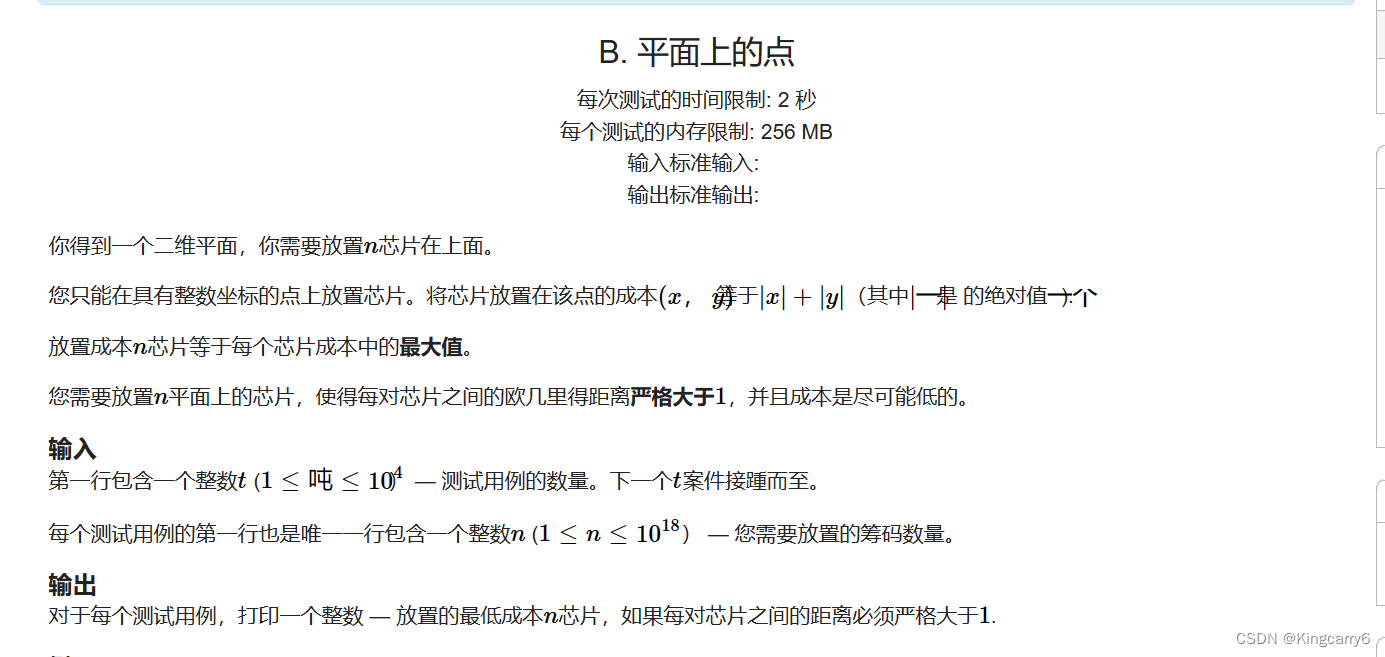

在数轴上放点,使得每个点的距离都大于1,放每个点(x,y)的花费为|x| + |y|,总的花费定义为最大的点的花费
我们每次放的点一定是在一个正方形边上的,只有一个点的时候是在原点,2~4个的时候我们就会选择(0,1),(1,0),(0,-1),(-1,0)这个正方形(看成是边长相等的菱形)这个时候边长是2,能放点的数量是4,最大花费为1,
5~9个的时候选择
(0,2),(1,1)(2,0)(1,-1),(0,-2),(-1,-1),(-2,0),(-1,1),(0,0)
可以看出我们的花费是和我们所在的是长度是多少的正方形有关,我们二分出能放在边长是多少的正方形,答案就是这个边长-1
#include <iostream>
#include <bits/stdc++.h>
#include <cstring>
#include <vector>
#include <unordered_map>
#include <queue>
#include <set>
#include <algorithm>
#define x first
#define y second
#define int long long
#define pb emplace_back
#define fu(i,a,b) for(int i=a;i<=b; ++ i)
#define fd(i,a,b) for(int i=a;i>=b; -- i)
#define endl '\n'
#define ms(x,y) memset(x,y,sizeof x)
#define ios ios::sync_with_stdio(0),cin.tie(0),cout.tie(0);
using namespace std;
typedef long long LL;
typedef unsigned long long ULL;
typedef vector<vector<LL>> VVL;
typedef vector<vector<int>> VVI;
typedef vector<LL> VL;
typedef vector<int> VI;
typedef vector<string> VS;
typedef pair<int,int> PII;
typedef vector<PII> VPII;
typedef pair<PII,int> PIII;
typedef pair<double,double> PDD;
typedef pair<double,int> PDI;
typedef pair<char,int> PCI;
typedef pair<string,int> PSI;
typedef pair<int,string> PIS;
typedef pair<int,char> PIC;
typedef pair<LL,LL> PLL;
typedef __int128 i128;
typedef unsigned long long ULL;
const int N =2e5 + 10,M = N * 2,base =400 ,INF = 0x3f3f3f3f,P = 131;
const double eps = 1e-8;
const int mod = 998244353;
const LL LNF=(LL) INF * INF;
LL n;
inline void solve()
{
cin >> n ;
LL l=1,r= 1e18;
while(l < r )
{
LL mid = l + r >> 1;
if((i128) mid * mid >= n) r=mid;
else l = mid +1;
}
cout << l-1 <<endl;
}
signed main()
{
// freopen("1.txt","r",stdin);
// #define int long long
ios
// cout << fixed<<setprecision(2);
int t=1;
cin>>t;
int now = 1;
while(t -- )
{
// cout<<"Case ";
// cout<<"Case #";
// cout<<"Scenario #";
// cout<< now ++ <<": ";
// cout<< now ++ <<": \n";
solve();
}
return 0;
}




 该问题描述了在数轴上放置点的策略,要求每个点之间的距离大于1,并且总花费(基于点的坐标绝对值之和)最大化。随着点数量的增加,会选择特定位置的点,这些点位于不同大小的正方形边上。解决方案涉及使用二分搜索找到能放置给定点数的最大正方形边长,从而得出最大花费。
该问题描述了在数轴上放置点的策略,要求每个点之间的距离大于1,并且总花费(基于点的坐标绝对值之和)最大化。随着点数量的增加,会选择特定位置的点,这些点位于不同大小的正方形边上。解决方案涉及使用二分搜索找到能放置给定点数的最大正方形边长,从而得出最大花费。

















 4478
4478

 被折叠的 条评论
为什么被折叠?
被折叠的 条评论
为什么被折叠?








